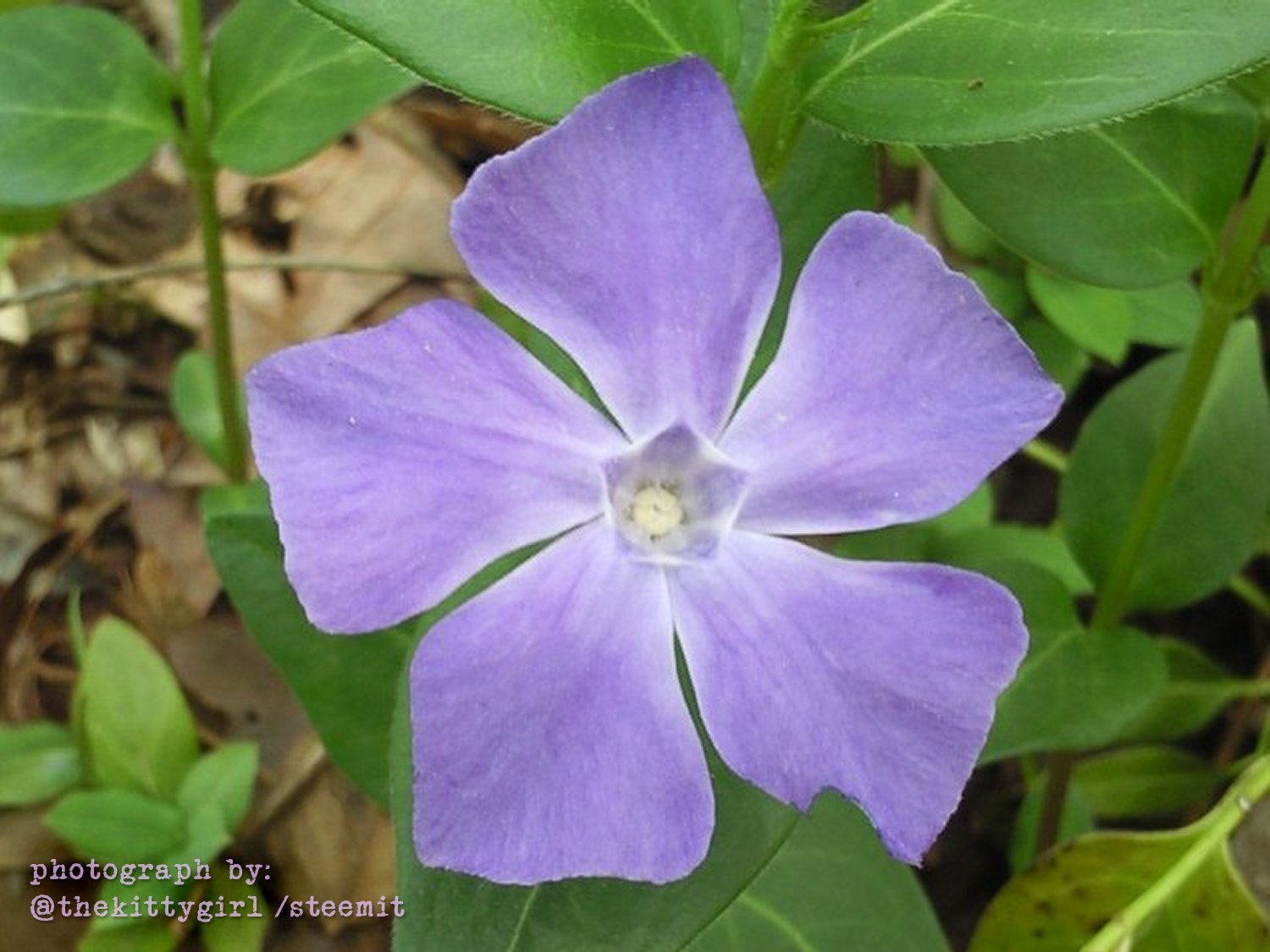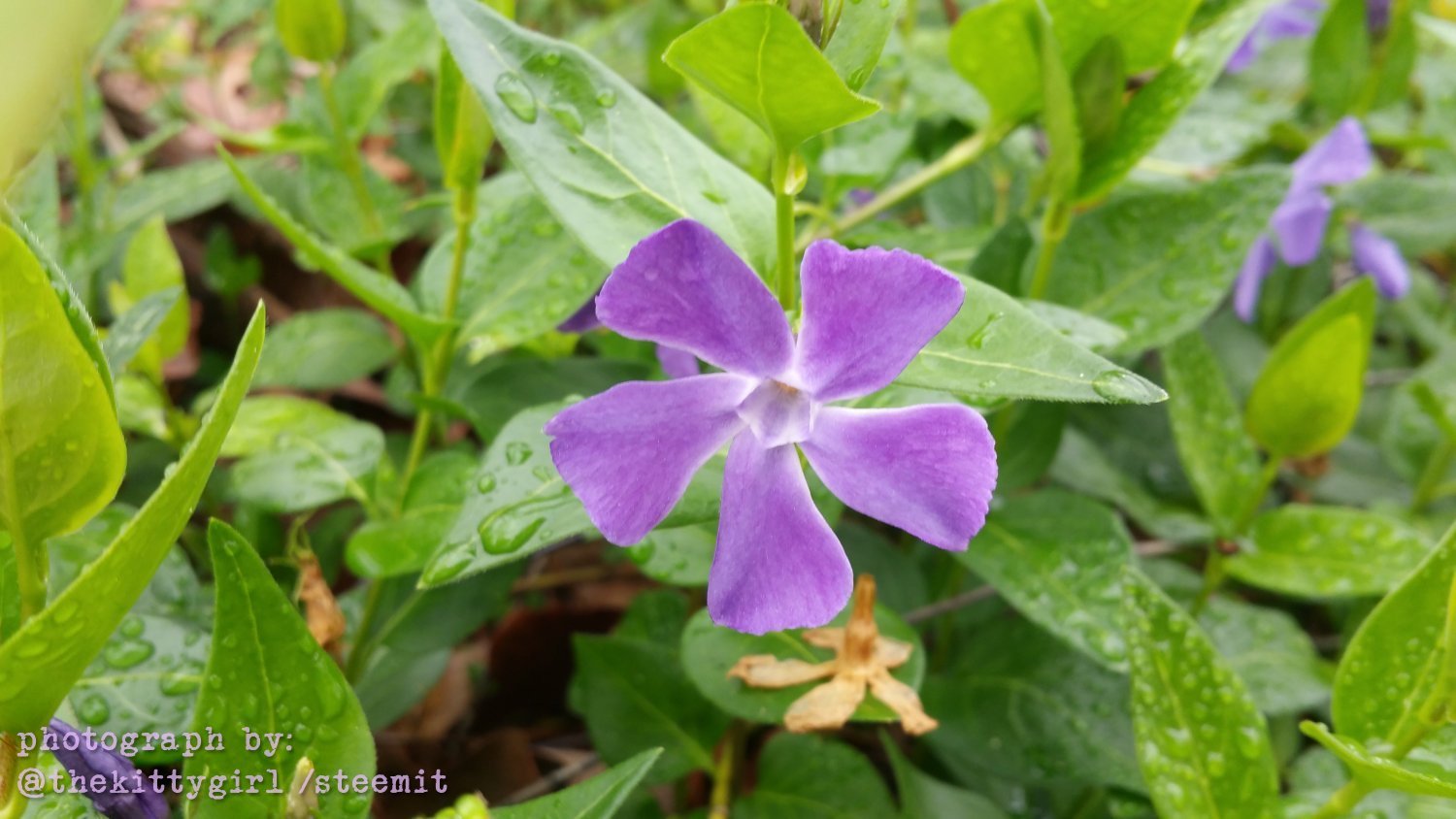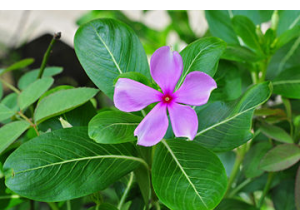One of the most delightful little flowers to me in the springtime is the Periwinkle. There are three different flowers in the same family by that name, but the ones we have are of the genus Vinca — both Vinca major and Vinca minor, although the latter is more abundant in our yard. The plants are small and spread easily to create a great ground cover. The two species in the genus Vinca are native to parts of Europe, northwest Africa, and the Middle East.

photo by me
The leaves stay green all year long, but the little flowers only appear from mid-spring through early summer. Some species will bloom again, erratically, during the summertime if conditions warrant. Depending on species and soil conditions, the flowers can appear bluish or blue-violet, lending their name to the "periwinkle" crayon in art boxes, as the lovely specimen shown above. However, some flowers can also appear more purplish, as the one shown below.

photo by me

Catharanthus roseus
source: Wikipedia
SOURCES
1 GardenNerdy.com
2 Wikipedia: Catharanthus_roseus
2 Wikipedia: Vinca







